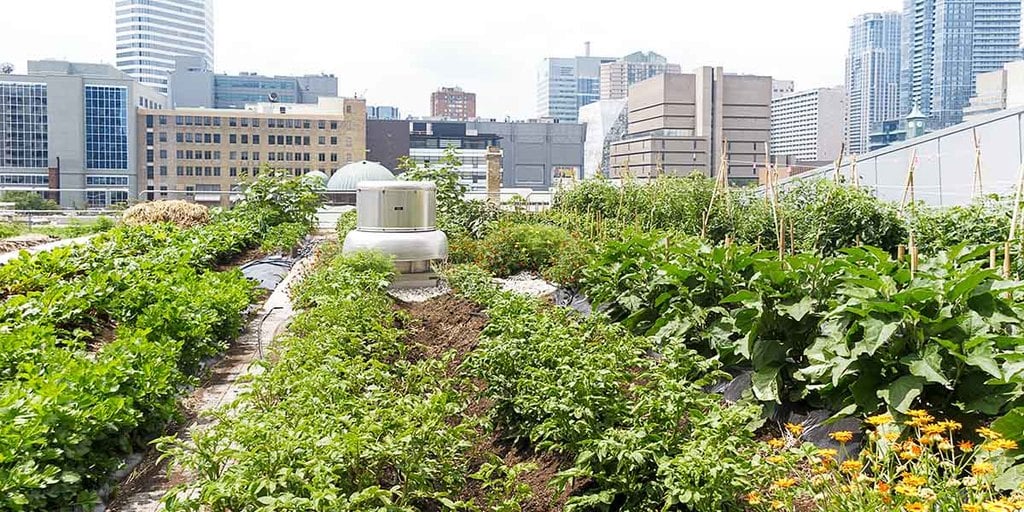City Blooming - The Facts
City Blooming - The Facts
Blog Article
Some Known Details About City Blooming
Table of ContentsCity Blooming - An OverviewFacts About City Blooming RevealedThe Ultimate Guide To City BloomingThe 6-Minute Rule for City BloomingCity Blooming Fundamentals Explained
Fascinated in expanding food for sale in the City of Chicago? Below is a listing of often asked concerns pertaining to the regulations and guidelines that growers should think about when planning a city farming job.
The zoning amendment does not modify any kind of various other codes handling composting, structure authorizations, acquiring or renting City possessed home, company licenses or ecological contamination. There are existing codes that manage these issues and they stay completely impact and may be applicable to your job. Community gardens are typically possessed or handled by public entities, public companies or community-based companies and maintained by volunteers.
Urban ranches expand food that is planned to be sold, either on a not-for-profit or for-profit basis. Due to their business purpose, metropolitan ranches call for a service license.
Unknown Facts About City Blooming
The amount of garden compost product can not exceed 25 cubic lawns at any kind of offered time according to the standards in 7-28-715 of the City's Municipal Code. Because the soil at most brand-new garden websites requires amending, compost, dirt, wood chips, or various other materials can be gotten to create or boost the expanding room.

If a structure authorization is needed after that the hoophouse will be considered an accessory building. You can find out more about the structure permit needs by contacting the Department of Structures. The 25,000-square-foot size restriction is planned to avoid a single neighborhood yard from controling a provided block or interfering with the block's existing property or commercial character.
The limitation does not relate to yards situated in Public Open Room (POS) districts. Can there be greater than one area garden that is 25,000 square feet on a single block? Yes. The size restriction relates to specific yards, not to private blocks. No. Secure fencing is not required, however, yards that have large parking lot may be required to install fencing or various other landscaping attributes.
More About City Blooming
B1 & B2 areas call for that all industrial use tasks be conducted inside your home. Is secure fencing required for metropolitan farms? Fencings might be called for, along with landscape design and screening, for specific parking locations and outdoor work or storage areas depending on location and the details activity taking area.
Yes. Urban ranches require building authorizations and zoning approvals before building. Various other kinds of city evaluation may be required relying on details frameworks, tasks, size, landscaping, licensing, public heath and stormwater administration issues. A lot of her response these needs are recognized in the task layout or permitting procedure, nevertheless, the applicant might be liable to individually recognize particular licenses or allows that may be required.
Yes. The sort of license is figured out by what is taking place at the website. The Department of Company Affairs and Consumer Security can help establish the certain kind of business certificate that's required. Yes. Off road vehicle parking is required for most industrial jobs in Chicago. The required number of garage is based on the number of staff members servicing site and not the square footage of the growing space.
The Only Guide for City Blooming

A metropolitan farm can offer compost material produced on site, nonetheless, the operation should comply with the policies in 7-28-715 of the Chicago Municipal Code. Aquaponic systems are allowed inside on urban ranches in several zoning districts.
Approximately 5 hives or nests of honey bees might be kept as an accessory usage. Beekeepers must sign up with the Illinois Department of Farming. To find out more concerning the suggested zoning change you may get in touch with the Department of Housing and Economic Growth, Bureau of Planning and Zoning at 312.744.8563.
Farming in cities and urban areas An urban ranch in Chicago. Urban agriculture describes various techniques of growing. https://telegra.ph/City-Gardening-Embracing-Green-Spaces-in-Urban-Life-06-27, processing, and distributing food in city areas. The term additionally puts on the location tasks of pet husbandry, aquaculture, beekeeping, and gardening in a metropolitan context. Urban agriculture is identified from peri-urban farming, which happens in backwoods beside suburban areas.
Not known Details About City Blooming
It can include an activity of organic cultivators, "foodies" and "locavores", who look for to create social networks based on a shared values of nature and area holism. These networks can create using formal institutional support, becoming integrated into neighborhood town preparation as a "shift town" motion for lasting city development.
Some of the first proof of metropolitan agriculture comes from Mesopotamia.
Report this page